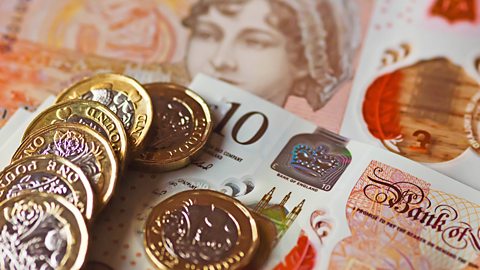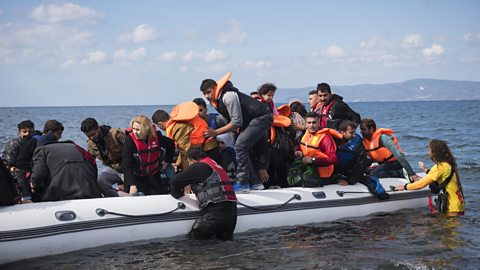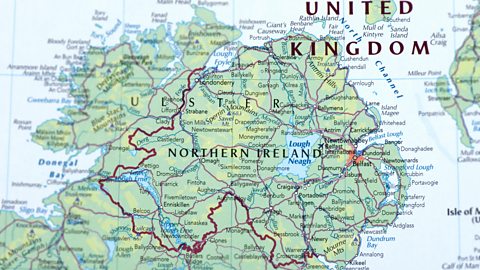What do you know?
How might a country benefit from becoming more developed?
When a country becomes more developed, it has more money to spend on things like roads, hospitals and schools. People living in developed countries tend to have a better quality of life.
Key Points
- Development measures progress within a country. The development gap refers to the differences between high income countries (HICs)Countries recognised by the World Bank as being wealthier. This classification is reviewed yearly. and low income countries (LICs)Countries recognised by the World Bank as having a lower income than other countries. This classification is reviewed yearly..
- Gross National Income (GNI) per capitaThe total amount of money earned by a country’s people and businesses divided by the number of people in that country. It is used to measure economic development., Human Development Index (HDI)A composite measure of development within a country using GNI per capita, years of education and life expectancy. and literacy rateThe percentage of adults that can read and write. The literacy rate in the UK is 99%. are development indicators. These help us to compare different countries.
- Uneven developmentThe progress of a country in terms of wealth and human well-being. has historical, political, geographical and socio-economicConcerning social factors, such as level of education, and economic factors such as income. causes.
What is development?
Find out how development is measured
HIBA: Measuring development.
SOFT MUSIC
Hey I'm Hiba, and I'm a civil engineer. I work on projects to increase wealth in different parts of the world and to improve the lives of the residents.
Development is a measure of how advanced a country is socially, economically, or technologically. And countries around the world are at different stages of development.
Economic indicators measure a country’s wealth and how it is generated. Social indicators measure health, education and equality. The data may include life expectancy, infant mortality rate, and literacy rate.
But development cannot be measured accurately using one single indicator. It gives an incomplete picture.
The United Nations now uses a composite indicator called the Human Development Index. This means that it's made up of multiple measures which include number of years' schooling, life expectancy and per capita income.
In Uzbekistan, for example, the farmers struggle to support their families. It's a desert climate so there is little water. Our job is to ensure they have a water system that works correctly so that they can grow crops.
By measuring development, we can work out where aid and funding is most needed to improve quality of life.
SOFT MUSIC
I love my job because I'm enabling changes that help develop the wider community.
MUSIC CONTINUES
Development is a measure of economicAssociated with jobs and money, eg economic progress refers to how much money a country is making., socialAssociated with people. For example, how healthy, educated and happy people are. and technologicalAssociated with the use of technology, machines and devices. progress within a country. The World BankAn international bank that provides loans and grants to the governments of low income countries (LICs) and middle income countries (MICs). is an international bank that gives advice and lends money to countries to help them to develop. The World Bank uses the terms high income countries (HICs)Countries recognised by the World Bank as being wealthier. This classification is reviewed yearly., middle income countries (MICs)Countries recognised by the World Bank as being neither high income or low income. This classification is reviewed yearly. and low income countries (LICs)Countries recognised by the World Bank as having a lower income than other countries. This classification is reviewed yearly. to classify nations according to their level of development.
Development Indicators
There is no single way to measure how developed a country is. However, development indicators can give some idea of a country’s development. Some common development indicatorsMeasures that are used to compare the development of one region or country against another. Examples of indicators include gross national income (GNI), adult literacy, and life expectancy. are explored below.
Gross National Income (GNI) per capita

GNI per capita is the total value of all the goods and services produced in a country in a year plus income from abroad, divided by the number of people (per capita) living in that country.
GNI per capita allows us to compare wealth between different countries. However, the calculation only tells us the average income within a country. The wealth of the country may not be shared out equally. Some people may earn a lot of money, whereas others may have very little.

Human Development Index (HDI)
The Human Development Index (HDI)A composite measure of development within a country using GNI per capita, years of education and life expectancy. is made up of a number of important measures:
- GNI per capita
- number of years of education
- life expectancy
HDI values can range from 0 (less developed) to 1 (more developed).
HDI is a compositeMade up of several parts or elements measure. It looks at three things - health, wealth and education. Looking at this range of measures can give a better overall idea of how a country is doing.
However, HDI does not consider other important factors, such as inequality or environmental issues. For example, HDI does not show whether there is a gender pay gap - a difference between the average earnings of men and women.
Literacy rates

Literacy rate is the percentage of people aged 15 years and above who can read and write.
Literacy rates tell us about the level of education within a country. Children who learn to read and write are more likely to get jobs when they are older. However, literacy rates do not tell us about the health or wealth of people.

The United Nations (UN) Sustainable Development Goals
On the 1st of January 2016, the United Nations (UN) introduced 17 sustainable development goals (SDGs) to be achieved by 2030. Former UN Secretary-General, Ban Ki-moon, said:
They are a to-do list for people and planet, and a blueprint for success.
The SDGs work across all countries. The SDGs include aims to wipe out poverty, fight inequality and tackle climate change.
Quiz: Measuring development
Question
Explain why HDI is a good development indicator.
HDI is a composite measure, which uses GNI per capita, number of years of schooling and life expectancy. This is useful as development is not just about one factor.
What are the causes of uneven development?
The development gap is the difference in levels of development between high income countries (HICs) and low income countries (LICs). There are many causes of uneven development:
Historical

Many LICs have a wealth of natural resourceSomething of value due to its usefulness such as food, water or raw materials. Early European explorers colonisedWhen one country enforces political control over another. many of these regions, exploitingMaking use of something and benefitting from it, for example the combustion of oil to generate electricity. the resources and the people living there. The colonial powers grew wealthier, whilst many of the colonies became low income countries. This caused a development gap which continued to grow.

Political
Poor governanceRule or control over a country or region. For example, a country’s government. and conflictA serious disagreement between individuals or groups of people. It can range from a minor disagreement to a war. have prevented some countries from developing. Some governments have used their power for personal gain rather than to benefit the country. Wars are expensive. Money is spent on weapons and repairing damage, rather than on healthcare and education.
Geographical

Some countries have very hot or very dry climates. This makes it difficult to secure a water supply and grow crops. Warm climates also allow tropical diseaseIllnesses that relate to tropical areas. Malaria is a tropical disease as it is found in warm, wet climates. to spread.
Some countries are landlockedA country that is surrounded by other countries and has no coastline.. This can make it harder to secure water supplies or safe routes to importTo purchase (buy) goods from abroad and bring them into a country. The goods are known as imports. and exportTo sell goods to other countries and send them out of the country to them. The goods are known as exports. goods. natural hazardA naturally-occurring event that causes harm to people., such as earthquakeThe shaking and vibration of the Earth's crust due to the movement of the Earth's plates (plate tectonics). and locustA type of grasshopper found in warmer climates. Locusts can gather in large swarms. They can travel long distances and destroy many crops., can also prevent a country from developing. This is because countries spend a lot of time and money recovering from the hazard.

Socio-economic
Many LICs countries have a youthful populationHaving a high proportion of the population under the age of 15.. Younger people will grow up to be the future workforce of a country. However they require a good education and in some countries there is a shortage of schools, teachers and resources. In some countries, children must work from a young age. Many children work for their families, doing tasks such as helping to grow food.
Question
Name one geographical reason for uneven development.
Very hot or very dry climates make it difficult to secure a water supply and grow crops. Warm climates also allow tropical diseases to spread. Landlocked countries find it harder to secure water supplies or safe routes to import and export goods.
Quiz: Uneven development
Play the Planet Planners game! gamePlay the Planet Planners game!
Make decisions for the planet in this KS3 geography game.

More on Human Geography
Find out more by working through a topic
- count5 of 5

- count1 of 5

- count2 of 5

- count3 of 5
